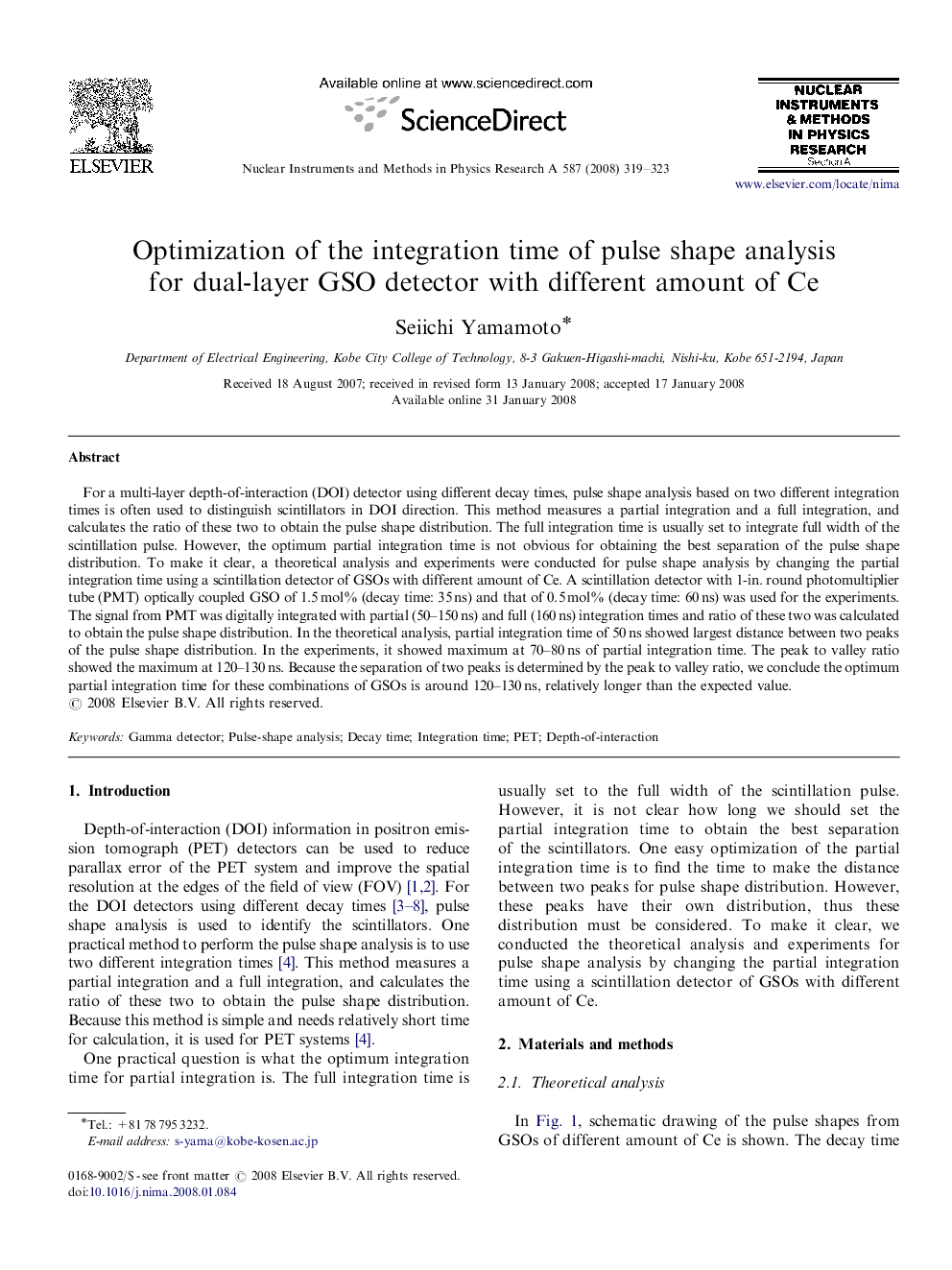| کد مقاله | کد نشریه | سال انتشار | مقاله انگلیسی | نسخه تمام متن |
|---|---|---|---|---|
| 1828860 | 1526489 | 2008 | 5 صفحه PDF | دانلود رایگان |
عنوان انگلیسی مقاله ISI
Optimization of the integration time of pulse shape analysis for dual-layer GSO detector with different amount of Ce
دانلود مقاله + سفارش ترجمه
دانلود مقاله ISI انگلیسی
رایگان برای ایرانیان
کلمات کلیدی
موضوعات مرتبط
مهندسی و علوم پایه
فیزیک و نجوم
ابزار دقیق
پیش نمایش صفحه اول مقاله

چکیده انگلیسی
For a multi-layer depth-of-interaction (DOI) detector using different decay times, pulse shape analysis based on two different integration times is often used to distinguish scintillators in DOI direction. This method measures a partial integration and a full integration, and calculates the ratio of these two to obtain the pulse shape distribution. The full integration time is usually set to integrate full width of the scintillation pulse. However, the optimum partial integration time is not obvious for obtaining the best separation of the pulse shape distribution. To make it clear, a theoretical analysis and experiments were conducted for pulse shape analysis by changing the partial integration time using a scintillation detector of GSOs with different amount of Ce. A scintillation detector with 1-in. round photomultiplier tube (PMT) optically coupled GSO of 1.5Â mol% (decay time: 35Â ns) and that of 0.5Â mol% (decay time: 60Â ns) was used for the experiments. The signal from PMT was digitally integrated with partial (50-150Â ns) and full (160Â ns) integration times and ratio of these two was calculated to obtain the pulse shape distribution. In the theoretical analysis, partial integration time of 50Â ns showed largest distance between two peaks of the pulse shape distribution. In the experiments, it showed maximum at 70-80Â ns of partial integration time. The peak to valley ratio showed the maximum at 120-130Â ns. Because the separation of two peaks is determined by the peak to valley ratio, we conclude the optimum partial integration time for these combinations of GSOs is around 120-130Â ns, relatively longer than the expected value.
ناشر
Database: Elsevier - ScienceDirect (ساینس دایرکت)
Journal: Nuclear Instruments and Methods in Physics Research Section A: Accelerators, Spectrometers, Detectors and Associated Equipment - Volume 587, Issues 2â3, 21 March 2008, Pages 319-323
Journal: Nuclear Instruments and Methods in Physics Research Section A: Accelerators, Spectrometers, Detectors and Associated Equipment - Volume 587, Issues 2â3, 21 March 2008, Pages 319-323
نویسندگان
Seiichi Yamamoto,